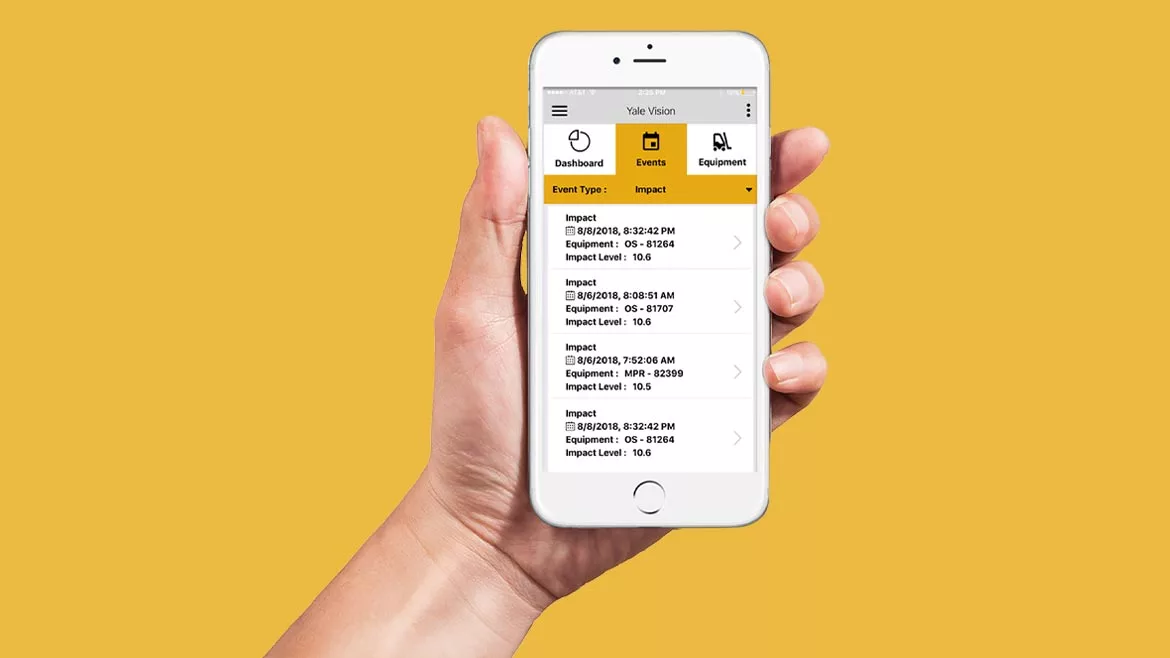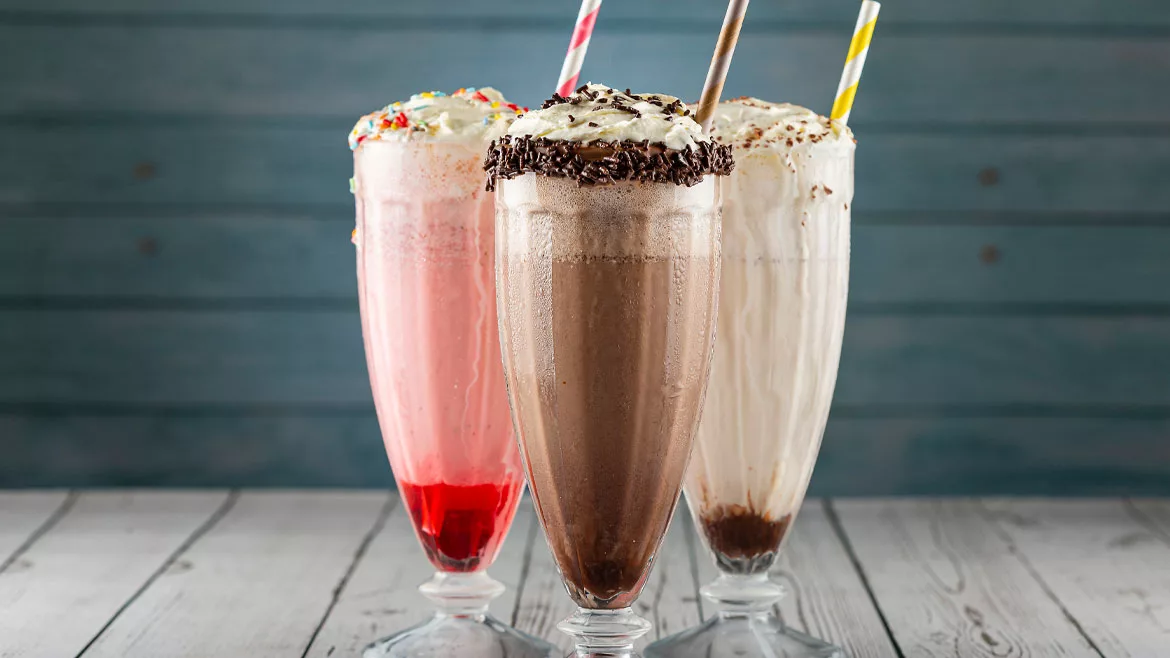Telematics provides valuable insights for beverage operations
Beverage-makers can examine fleet performance, make necessary changes thanks to information provided by telematics solutions

Image courtesy of Yale Lift Truck Technologies
In an episode of Netflix’s sketch comedy show “I Think You Should Leave,” Tim Robinson’s character Mike disrupts a work meeting to talk about his patterned shirt from a store called Dan Flashes. Mike explains to his coworkers that Dan Flashes sells men’s shirts with varying patterns and that the prices reflect how complicated the patterns are.
Not quite as comical as the shirt pattern discussion, consumer shopping patterns are adding their own level of complexity to beverage delivery.
Kevin McWilliams, director of major accounts at Yale Lift Truck Technologies, Greenville, N.C., shares how the diverse SKUs in stores has made distribution more complicated.
“Simply put, consumers have sought more from their beverage selections — more sizes, more flavors and more quantities,” McWilliams says. “In fact, beverage companies are introducing more products annually than other leading segments, meaning more SKUs for warehouses to process, store and distribute. Consumers are also expecting greater convenience and swift availability of these products both in stores and online.”
This places greater pressure on beverage operations to secure equipment that can help them increase the efficiency of their storage, picking and delivery processes, he adds.
Labor issues also are impacting delivery.
“Within the four walls of beverage distribution operations, warehouses face a tough outlook, with persistent labor challenges threatening productivity and risking safety incidents,” McWilliams explains.
He points to a recent MHI Industry Report, which noted that 52% of businesses ranked hiring and retaining skilled labor as a major challenge for their supply chains. The same report found that 45% of businesses ranked a shortage of talent as a major challenge.
“Same-day delivery is also becoming an expectation, making speed and agility a priority for operations, all while keeping costs down amid inflation,” McWilliams says. “These customer demands were ranked by 43% of businesses as a major supply chain challenge, per the 2025 MHI Industry Report.”
Streamlining the process
Warehouses deal with a variety of challenges every day, from a shortage of operators to rising costs.
Yale’s McWilliams notes these factors and says there are several ways telemetry data can assist in adjusting operations, depending on specific goals and challenges.
“For example, if impacts are found to be more common in certain areas, managers can utilize this data to rearrange their facility’s layout and reduce the risk of costly impacts in the problem area,” he says. “If the data shows that a particular operator is prone to impacts, warehouse managers can arrange for additional training that reinforces proper operating behavior and reduce the likelihood of future impacts.”
As operating costs continue to rise, McWilliams states that lift truck utilization data can help businesses determine whether their fleet is the right size and structured with the appropriate mix of equipment.
“In cases where it’s determined the fleet is too large, operations can structure their fleet more efficiently going forward and protect their bottom line,” he adds.
Michael Bloom, director of connected solutions at Mitsubishi Logisnext Americas (MLA), Houston, shares how far telematics technology has come. When it first started out, he notes that telematics was just GPS tracking, but things quickly changed when businesses began “asking better questions.” Not just where is the vehicle, but what is it doing?

Today, Bloom feels that telematics is doing a lot of heavy lifting behind the scenes, from digital proof of delivery to photos and signatures.
“In the beverage industry specifically, telematics is now embedded across the entire supply chain — from the plant to the distributor, to the delivery truck, to the retail store floor,” he says. “And it’s not just about trucks anymore. Adoption rates for use with forklifts, order pickers, reach trucks, stand up counterbalance, pallet jacks and other material handling equipment are all on the rise.”
The following are several areas that Bloom has identified where telematics is “making a real impact:”
- Compliance made easy: Tasks like pre-shift inspections used to be on paper, but now are digital, fast and auditable.
- Cost control through visibility: Tasks such as tracking how long it takes to load a pallet, how often a truck idles or how efficiently a route is being run can be measured and managed, adding up to real savings.
- Risk mitigation through automation: When a pre-shift inspection flags an issue, the system can automatically notify maintenance and disable the forklift to prevent further use. The equipment remains locked until a supervisor or technician resolves the problem and reauthorizes operation, helping ensure safety protocols are followed.
- Operator accountability: Companies can track operator certifications, send alerts when renewals are due and even restrict equipment use to qualified personnel.
- Proactive maintenance: Instead of reacting to broken equipment, now companies can schedule maintenance based on usage data, reducing downtime and elongating equipment lifespan.
“Telematics started with location,” Bloom says. “Now it’s about insight. It’s helping beverage delivery companies not only know what’s happening — but what to do about it. That shift — from data to decision-making — is where the real power lies.”
Bloom shares his thoughts on how telematics suppliers are utilizing solutions like machine vision and artificial intelligence (AI) in innovations.
“We’re in the middle of a really exciting shift — traditional telematics is merging with advanced vision systems and AI to give companies a much clearer, real-time picture of what’s happening on the ground,” he says.
Historically, Bloom notes that telematics has done a good job of logging impacts, but with machine vision and AI, there can be video captured and replayed.
“Traditional telematics tells you something happened,” he explains. “Video shows you exactly what happened. It answers the question ‘why’ something happened and is like having an instant replay for events that occur within the warehouse. That kind of visibility not only improves incident investigation — it’s a fantastic training tool.”
These new solutions are helping telematics move from being reactive to proactive and even predictive, Bloom notes.
“We’re not just collecting data anymore; we’re helping customers improve their understanding of operator behavior, which allows them to help mitigate risks by training smarter,” he says. “It’s where the industry is headed and it’s happening faster than people might think.”
Similarly, Yale’s McWilliams notes that the company’s Yale Vision impact camera, which is a telemetry accessory, automatically captures and saves high-definition video footage of events three minutes before and after an impact is detected by Yale Vision telematics.
“The solution provides warehouse managers with visibility they can use to help improve safety, increase efficiency and reduce costs within their operation,” he explains. “Even in harsh- and low-light environments, the camera can help warehouses to validate impacts and identify product damage and inventory shrinkage issues caused by those impacts.”
As for other advancements, McWilliams says the initial tier of the Yale Vision solution became a standard feature on a number of key warehouse trucks, including order pickers, reach trucks and turret trucks.
“With this change, more operations will have the ability to better understand their total cost of fleet operations by tracking their operation’s lift truck utilization, impacts and location, as well as help protect against costly downtime by tracking and scheduling preventative maintenance,” he shares.
MLA’s Bloom says the core of telematics has become “fairly commoditized,” with most providers offering variations of the same basic data set.
“The real excitement now is around what comes next,” he states. “We’re seeing the next generation of telematics move from simply collecting data to helping people make smarter decisions — faster.”
One big shift Bloom notes is around the depth and relevance of the data. Rather than high-level engine fault codes, he expects to see systems surface detailed, application-specific diagnostics. Bloom uses the example of rental fleet managers, who he says, “will have telematics tailored to their world,” from tracking planned maintenance to automating the return and inspection process.
“But the biggest leap is going to come from AI — specifically, how we interact with telematics,” Bloom says. “Imagine a world where instead of digging through reports, you just ask, ‘Which of my forklifts are overdue for maintenances?’ or ‘Show me which operators could benefit most from some additional training — and for which topic areas?’ That’s what tools like ChatGPT have opened people’s eyes to, which questions are the right questions to be asking.”
Bloom states that, oftentimes, the answer to one question helps to figure out the question one should be asking, but they never would have gotten there without the first question’s answer.
“We’re heading toward what I like to call a ‘forkliftGPT’ model, where advanced telematics platforms are layered with large language models that let anyone, regardless of technical skill, extract insights from complex operational data,” he says. “It’s intuitive. It’s fast. And it’s powerful.
“What’s even more exciting is the ability to merge structured data, like machine diagnostics and GPS, with unstructured data, like training videos, call reports and even PDF brochures,” Bloom continues. “When you can search across both types of data, analyze patterns and connect the dots — you unlock a whole new level of value.”
This shift is going to make analytics more accessible, Bloom adds.
Improving operations
As operations gain insights from telematics data collection, they can sort through data points to better their operations.
To utilize the data generated by lift truck telemetry solutions, Yale’s McWilliams says operations must be able to easily access, view and analyze that data.
“The Yale Vision portal makes that possible by presenting it in a series of easy-to-use dashboards that provides users with complete visibility from any internet-enabled device and allows warehouses to easily access the data that’s most important to them,” he explains. “A smartphone app is also available to provide users with insights into their fleet, including automatic impact alerts and pre-shift checklist notifications.”
At the solution’s highest tier, McWilliams notes that users also can use the app to control operator access, trigger shutdown countdowns and view the speeds of active lift trucks.
“Additionally, Yale Vision is equipped to provide actionable insights without further data sortation from the customer, removing the guesswork from operators who may not be used to utilizing such data,” he says. “With its ability to monitor and provide data on equipment diagnostics, the solution can recognize when potential issues may arise and automatically notify users that maintenance is required on that truck. Those who equip electric trucks with Yale Battery Vision can also receive automatic notifications whenever a potential battery issue is detected.”
Before investing in telematics solutions, McWilliams urges beverage-makers to consider their business goals that have led to the point of seeking a solution. They must identify specific problem areas they are looking to solve, if any, and analyze how the fleet and operators are performing, he says.
“Having an idea of what telemetry should help address is key,” he adds.
Key areas McWilliams notes include OSHA compliance, operator monitoring, preventative maintenance and equipment utilizations.
“Goals like these can help operators find the best-fit telemetry option to meet their needs — one that helps them avoid paying for more than necessary or for a solution that does not provide the functionality really required,” he says.
MLA’s Bloom says that the biggest thing he always tells people is that telematics data is only as valuable as their ability to do something meaningful with it. The first thing operation teams should evaluate is the strength of the analytics engine, he shares, noting that if it can surface insights clearly, users can find what they need without digging through dashboards.
“If the system can’t help you see the big picture or spot the patterns that matter, you’re leaving a lot of value on the table,” Bloom states.
The next big consideration is integration, according to Bloom. Because most beverage operations have a mix of forklift brands in their fleet, it often means dealing with numerous telematics platforms, multiple logins and no easy way of viewing everything in one place, he explains.
“If your system can’t pull in third-party data — or worse, if it locks you into a walled garden — you’ll spend more time managing data than managing your operation,” Bloom says. “Of course, any system you invest in needs to cover the fundamentals: access control, preventative maintenance, pre-shift inspections, engine hour tracking, fault codes — all table stakes at this point.”
With more than 16 years in this space, Bloom has observed this truth time and time again: most companies use maybe 20% of their telematics system’s capabilities. And that’s not a knock on the users, he clarifies, but a reflection of how overwhelming these systems can be.
“There’s often so much functionality crammed in that it just becomes more noise,” Bloom says. “My advice? Don’t chase the platform with the most bells and whistles. Find the one that nails the 20% you need and will actually use. That’s where you’ll see the biggest return on your investment.”
Looking for a reprint of this article?
From high-res PDFs to custom plaques, order your copy today!









